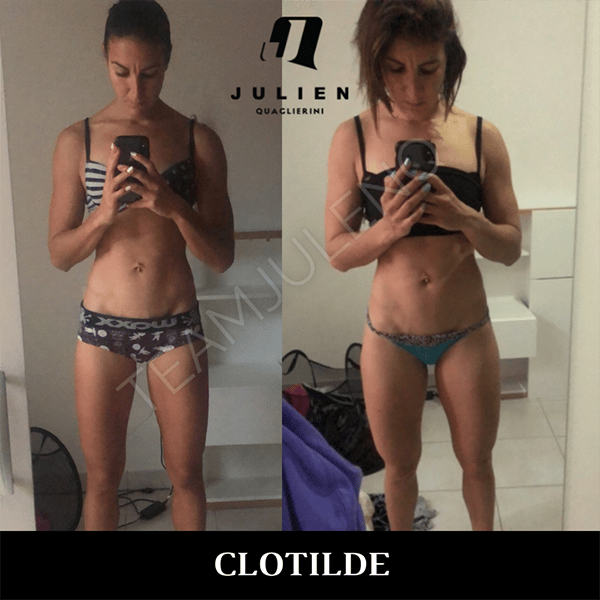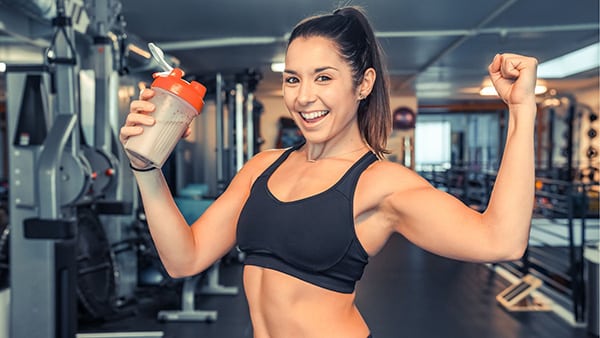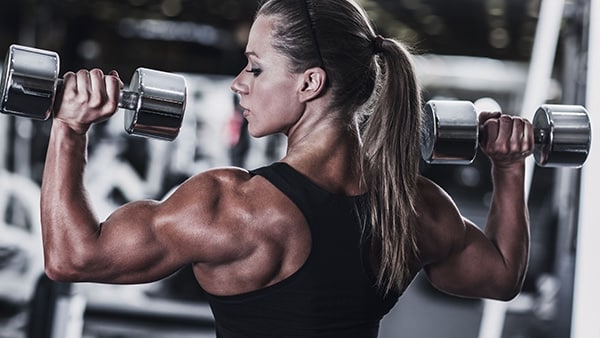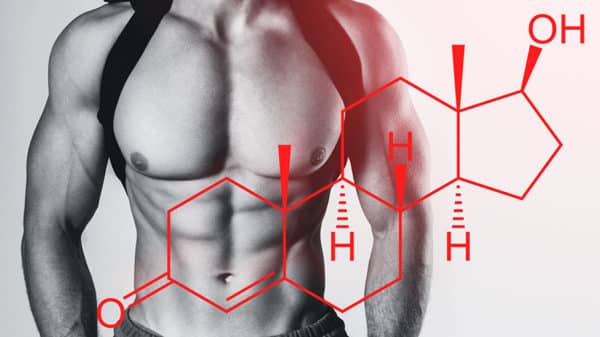The muscle gain in women is subject to many preconceived ideas. Less popular than weight loss, gaining muscle can nevertheless tone the body and offer many benefits. However, it is important to follow a strict diet to achieve this, as women store fat more easily than men.
What is a mass gain?
Definition
Muscle mass gain refers to a period during which an individual seeks to increase their body weight. This requires a caloric surplus.
For women, the muscle gain can help meet different objectives. First, it is an excellent way to tone the body. Gaining lean muscle mass is ideal for looking more athletic.
Some athletes also use weight training to gain strength or to prevent injury. They can improve their athletic performance in other sports such as track and field, basketball, handball or rugby.
Attention, any increase in mass implies gain fat. Once you have reached your target weight, you can do a weight loss program to eliminate the few extra pounds of body fat.
What are the differences between men and women?
The human body presents some specificities according to the sex. It is in particular the case at the level of the hormones.
In general, women have a body fat percentage higher than that of men (in the order of 25 to 30 %, against 12 to 15 %). This is due to a lower presence of androgens.
Androgens are steroid hormones produced in very small quantities by the ovaries and adrenal glands in women.
Testosterone is the main hormone of the androgen family. It is actively involved in muscle building. This is why men have an easier time producing muscle and reducing their body fat.
For women, it is therefore essential to take these parameters into account when starting to build muscle mass.
Can women gain weight?
Yes, of course!
Despite a rate of testosterone women can optimize their muscle development. It will just be slower.
As you can see, we are far from the myth of the woman who starts working out and becomes a mountain of muscle after a few weeks. Ladies, rest assured, your physique will not resemble that of a bodybuilder, even if you train 2 hours a day in the weight room. It is physiologically impossible.
Muscle mass gain for women must be done gradually, with a controlled diet. If not, you may experience significant weight gain with a lot of fat.
It is therefore recommended to get help from a professional sports coach who will know how to set up a clean weight gain.
A clean bulk (as opposed to a dirty bulk) consists of adopting a healthy diet and a light caloric surplus (between 200 and 400 calories). This strategy helps to promote muscular progress and limit the appearance of fat cells.
This is the choice that Clotilde made by opting for a personalized follow-up over several months. Wishing to gain weight, she had not been able to achieve the expected results.
Together, we set up a sports and dietary support. His food plan is now adapted to his metabolism, which allows him to see his weight on the scale increase in a linear way. After only a few weeks, his physical transformation was already widely visible.
Muscle mass gain for women: how to do it?
The crucial role of nutrition
Your diet is the key to your muscle gain. Indeed, a slight caloric surplus is essential to develop your muscle mass effectively and sustainably.
To reach your goal, eat healthy, unprocessed foods such as fruits and vegetables. Avoid industrial dishes and foods rich in sugar, otherwise your extra pounds will be mostly composed of fat.
Here are some tips for following quality nutrition.
Let's start with the macronutrients (proteins, fats and carbohydrates). Consume 2 grams of proteins per kilo of body weight. If you weigh 55 kilograms, you will need 110 grams of protein, spread over your various meals. Examples of protein-rich foods include eggs, chicken, turkey, beef or cottage cheese.
As far as lipids are concerned, 1 gram per kilo of body weight is sufficient. Choose good fats from fatty fish, avocados, oilseeds or vegetable oils.
The rest of your daily caloric intake will be reserved for carbohydrates.
This distribution of macronutrients is essential to slow down the arrival of adipose tissue.
To gain mass more easily, don't hesitate to spread your caloric intake over 4 to 6 meals a day.
Is it necessary to consume food supplements?
It is impossible for me to talk about the dietary aspect of weight gain for women without mentioning food supplements.
These are not miracle products, but they will help you on a daily basis to reach your goal.
Let's look at this in more detail.
Whey protein
If you are having trouble meeting your daily protein intake, you can eat whey protein powder for breakfast or snacks.
Two main types of whey are offered by manufacturers:
- concentrated whey, less expensive and richer in carbohydrates and fats;
- whey isolate, which is purer and more expensive due to an advanced filtration process.
In both cases, whey protein will allow you to accelerate your muscle development. It is preferable to choose a native whey isolate for best results.
BCAAs
Consumed during or after your weight training, the BCAA (branched-chain amino acids) play an important role in muscle building.
BCAAs contain three amino acids that promote anabolism:
- leucine;
- isoleucine;
- valine.
BCAAs are always marked with a series of three numbers (2.1.1 or 8.1.1, for example). They simply correspond to the content of leucine, isoleucine and valine.
To increase your performance, choose leucine rich supplements (BCAA 6.1.1, 8.1.1 or 10.1.1).
Creatine
The creatine is a non-essential amino acid found in certain foods such as meat and fish.
Consumed as a dietary supplement, creatine increases sports performance (strength, endurance and muscle hypertrophy).
A study conducted in the United States in 2000 was specifically interested in the effects of creatine on women. The athletes who benefited from supplementation gained in strength. They also managed to lose fat significantly.
Pre-workouts
Pre-workouts and other boosters are consumed before training. They are often composed of caffeine, taurine, arginine, beta-alanine and sometimes creatine.
They aim to provide sufficient energy to lift heavier and longer. These supplements also accelerate muscle recovery.
By maximizing the quality of the sessions, you put all the chances on your side to gain muscle mass. However, it is not mandatory to consume them to gain weight.
Gainers
A gainer is a dietary supplement rich in protein and carbohydrates.
It can be helpful if you are not getting enough calories in your meals. Ideally, opt for homemade gainers in order to benefit from good quality nutritional contributions.
If your diet is providing you with enough calories and your weight is gradually increasing, then there is no need to use a gainer.
Weight training
While diet accounts for 70 % of successful muscle mass gain, physical activity should not be overlooked.
And to successfully gain a few pounds of muscle, the strength training is your best ally. Plan 4 to 5 workouts per week (including 2 for your legs) at the gym to work all your muscle groups. Each workout should last about 60 minutes, including the warm-up.
Your weight training program should be based on multi-joint exercises (the deadlift, squat, bench press, pull-ups or the military bench press).
Isolation movements will complete the sessions to obtain a harmonious and balanced silhouette.
To conclude
Muscle mass gain in women is essentially the same as in men. It is simply slower and must be done progressively, in order to avoid a surplus of fat mass. This inevitably requires the implementation of a controlled and quality diet.











